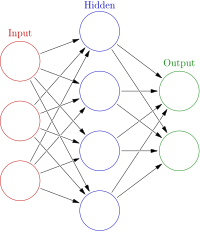
Photo from wikipedia
The Ziarat Watershed, located in the south of the Golestan Province, Iran, has witnessed several destructive landslide episodes, prompting a number of researchers to aspire to improve landslide susceptibility modeling… Click to show full abstract
The Ziarat Watershed, located in the south of the Golestan Province, Iran, has witnessed several destructive landslide episodes, prompting a number of researchers to aspire to improve landslide susceptibility modeling (LSM) techniques. We constructed three scenarios focusing on landslide positioning techniques (pixel-based, centroid, crown, and toe), training/test sampling strategies (Mahalanobis distance (MD), and random sampling (RS)), with alternative landslide/non-landslide data balances (1:1, 1:2, and 1:3). The data mining boosted regression trees (BRT) model was used for the landslide susceptibility modeling, using landslide data and 13 landslide controlling factors for the Ziarat Watershed. The performance of the scenarios was assessed using the areas under the success and prediction rate curves (AUSRC and AUPRC). A combination of pixel-based–MD–1:2 showed the highest learning capability and goodness-of-fit with an AUSRC value of 0.87, and the highest predictive power and generalization capacity with an AUPRC value of 0.79. Conversely, centroid-based–1:3–RS, crown-based–1:3–RS, and toe-based–1:3–RS performed less well. Comparatively, the pixel-based, MD, and 1:2 data balance scenarios surpassed their counterparts and outperformed the other models. The results indicated a high spatial differentiation with a significant chi-square value of 4549.46 at 95% confidence level. Moreover, 15.21% of the study area, containing almost 50% of the landslides, was found to have a high susceptibility to landslides. According to the premier scenario (pixel-based–MD–1:2), lithological formation, distance from roads, and NDVI, with respective contributions of 31.4%, 12.9%, and 12%, are the main spatial controlling factors leading to landslide occurrences in the study area.
Journal Title: Catena
Year Published: 2020
Link to full text (if available)
Share on Social Media: Sign Up to like & get
recommendations!